Over in the UK we tend to like something a bit special, a bit different and certainly a dream-build when it comes to our long-term parts testing rig. Nothing has changed this year, as our Scott Genius LT Tuned is “decommissioned” and stripped back to the bare frame. We now look to the new year with a totally new build in that of Starling Cycle’s new Murmur 29 bike.
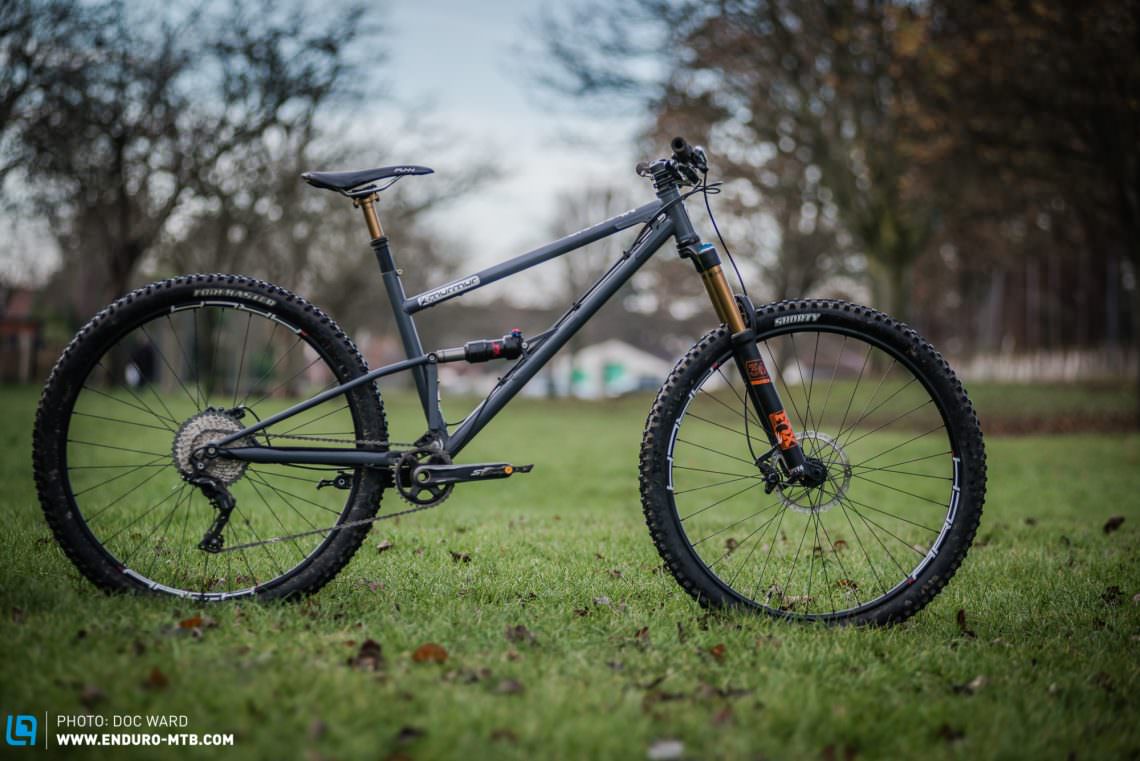
Not only are we going with a frame that is totally different to the norm, with the material of choice being good old steel, but we have also decided to go down the route of the custom geometry with this one, with influences coming from such bikes as Nikolai’s Geometron and Pole’s Evolink 29er; real long, low and slack with a steep seat tube angle. We are slowly watching the industry catch up with these crazy-length raked-out bikes and after testing several we can see why this is making a change from being madness in design, to a thing that an actually works!
We got onto Joe McEwan from Starling Cycles before he had even made this first Murmur 29, asking for a custom frame, also requesting that he made us a 29er; the answer being a resounding- HELL YES! So our requested custom dimensions and angles were sent across to Joe before he had even produced his first ever 29er, which we reckon made him raise an eyebrow slightly. We asked for a 510 mm reach, 63° head angle and the frame to go with our 150 mm dropper and fitment for the internal Shimano Di2 battery, plus compatibility with 150 mm travel forks.

The frame is nigh-on complete, just awaiting some tubing for the swingarm before being finished off and sent down to the custom painters for our other special custom request (we don’t ask for much do we!). So we headed over to visit Joe and chat about his current set-up in the busy suburbs of the vibrant city of Bristol, where his humble inviting townhouse hides a long garden with a very inconspicuous small shed down the end of the garden. This shed is Joe’s workspace where his creations are made, housing his selection of jigs, a circa 1940’s lathe (which he uses every day!) an old upright drill and his brazing equipment. It really is so refreshingly humble, old skool and a million miles away from the big corporate factories and offices of today’s bling-ed out best-selling carbon bikes and we just love it!
After watching Joe put the finishing touches to one of his frames with the brazing torch we sat down and touched base about how things were going and all things custom, just two weeks prior to Joe finishing his full-time job in aerospace to concentrate on Starling Cycles full time.
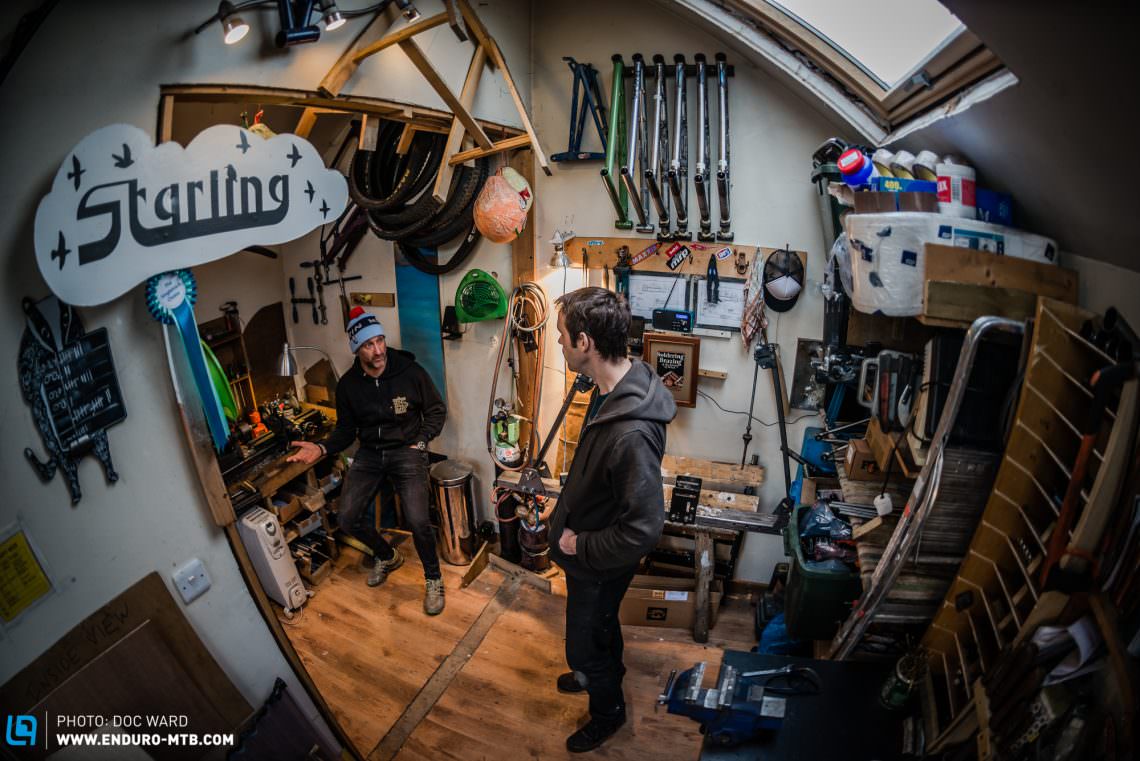
Moving into 2017, you’re about to finish in your job as an aerospace stress engineer, is that a big jump for you?
It’s going from sitting in an office running a little team to being in my shed building bikes; so yes!
Are you excited?
Yes, I’ve been doing aircraft engineering for nearly twenty years now, so perhaps I’m having a midlife crisis! (laughter) But it’s good to change and keep your life moving on. This is more “real engineering” than in the day job really.
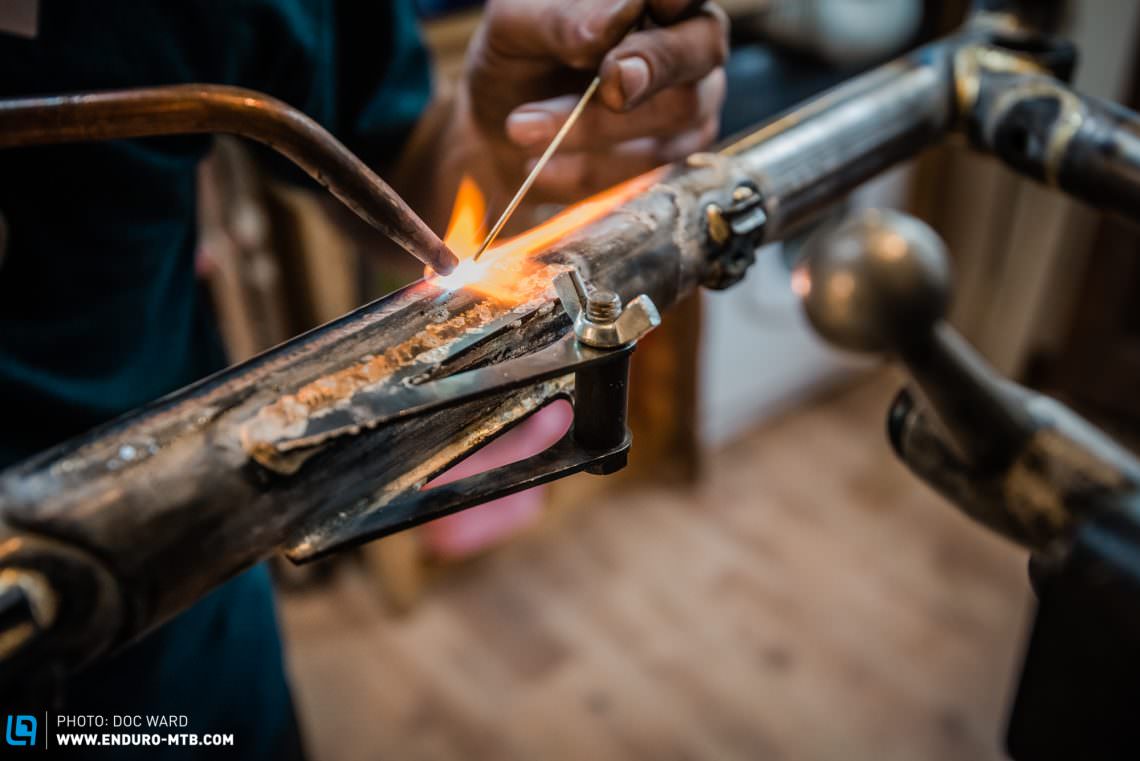
With this new 29 Murmur there seems to be lots of buzz about the bike on social media, how long have you had the idea of a 29er?
I’d never really ridden one, to be honest, I’d ridden mate’s ones briefly and sat on a few, but having to buy my own bikes, I haven’t had that much opportunity to try loads of bikes. But lots of customers have asked me to do one, following on from the 650b Swoop. So I thought I’d make one, I worked out what changes I had to make for it to work, with the same sort of configuration and it worked straight away as soon as I built the first one. Riding it myself, it’s absolutely fantastic and I can understand 29ers now!
After riding a long 29er we loved the custom geometry idea, so were you surprised with our geometry choices after we contacted you a few months ago?
No, because my bikes I ride myself have all been 480 mm reach from an original 450 mm and as they have got longer and slacker they generally feel better and better. So there’s no reason why big wheels should be any different to small wheels in terms of geometry, as long as you get the BB height right relative to the wheel axles. I don’t see why you should have a short steep 29er, it doesn’t make sense!
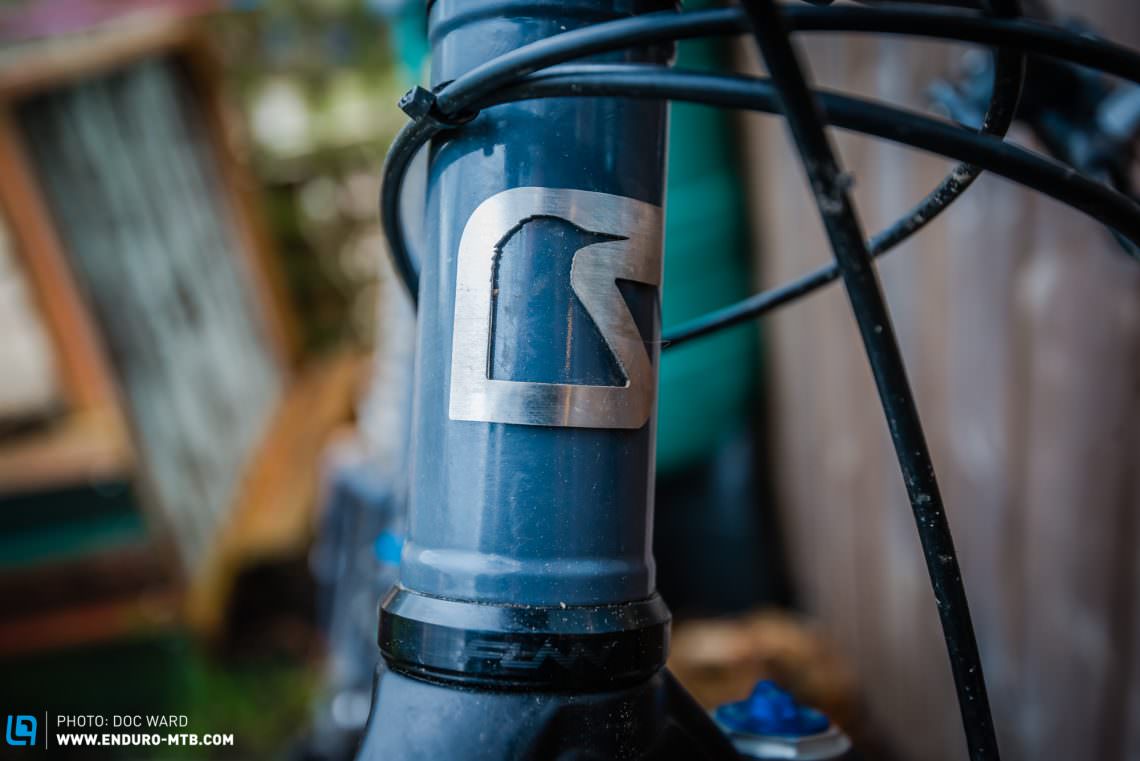
It’s quite refreshing to hear that because for years we’ve been told a 29er has to have a considerably steeper head angle to match that of a similar 650b bike.
There is one reason why you have to make a 29er a little bit steeper, in that the off-set on the fork can be a bit different, so you perhaps need it a bit steeper on a 29er to get the same feel on the trails. But it’s such a black art, until you’ve made lots of these things and tried them, you never really know how they will ride.
When it comes to your bike orders from customers, what sort of a percentage request custom geometry?
They are all custom geometry, there are no standard sizes. The rear triangle length and seat tube angle is fixed. With the front triangle, everybody decides their own head angle, reach, seat tube length and steerer length. Because I’m building everyone in the jig, they are set in the jig and there is no point doing standard sizes because it’s the same amount of work to do them as custom geometry as it is to do a set size.

So what happens if your customer doesn’t really know what geometry they like or would want, do you advise them?
Yes, head angle I can recommend now, so I recommend 65° on the Swoop and 66° on the Murmur, if they stick with that they are not going to be a million miles away. Seat tube length is easy enough, they just measure floor to seat rail height on their current bike and we can work that one out. So reach is the difficult one and what’s difficult is that things are changing now and today’s bikes are getting longer. But if they want the same as the bike they have now, all they have to do is measure their downtube. A downtube is a pretty good measurement of how big your bike is, then I can work out what they want. If they want to make it a little bit longer to follow current fashions and what seems to be a better riding bike, then we can just add a bit to it.
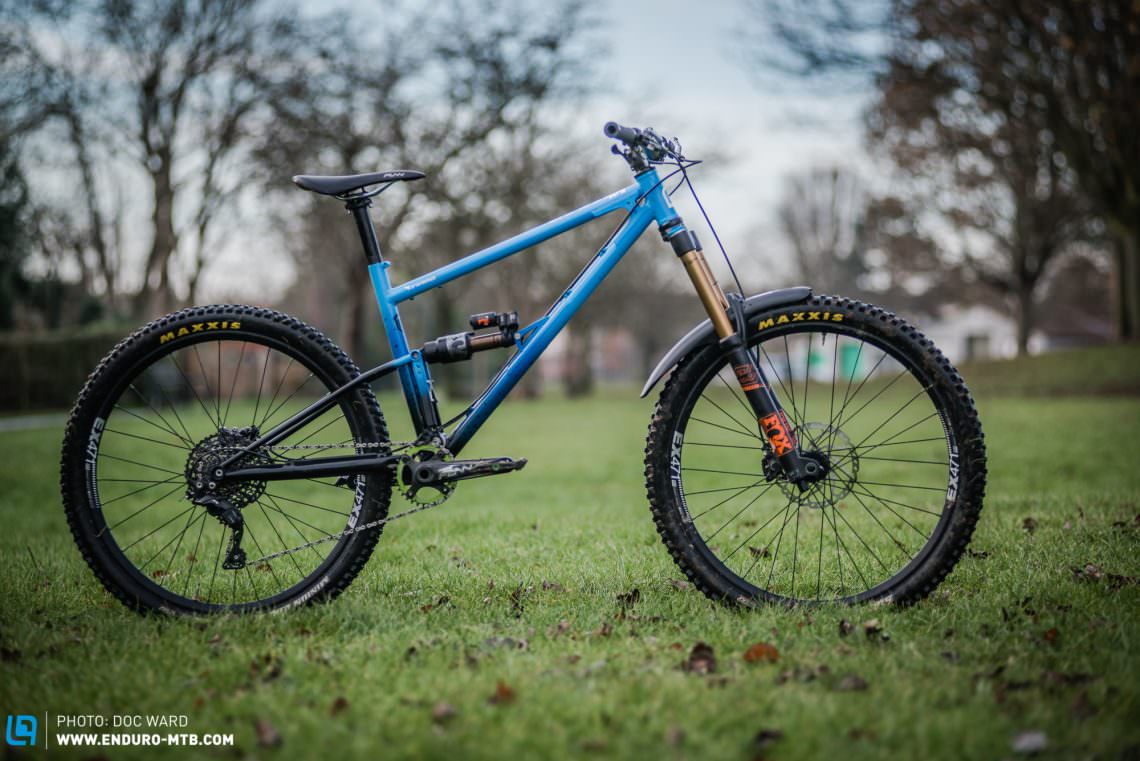
I’ve had quite a few people visiting me and sit on my bikes and I’m starting to develop quite an eye now for seeing whether people look balanced on the bike. It’s not the seated position, you get them standing up in the “attack position” and see if it looks right. I had a bloke round here the other day, he was about 173 cm (5’8″) and he was on a 480 mm reach one and it looked too big, whereas I had a bloke here who was 206 cm (6’9″) tall and you could see he needs at least an extra 50-75 mm in reach. He’s a big lad too, so that bike will have a few extra gussets here and there for extra strength!
So what did you think when we contacted you and requested a 63° head angle and 510 mm reach?
I think it’s on the top end of how far you want to go, but it will ride well, I’ve got no issues with that as your rider is 180 cm (5’11”) with long arms, so you are going 20 mm longer than me and I’m the same height, which isn’t that long to move your arms forwards and you’ll have a stem 10 mm shorter than me too, so moving forwards 10 mm is nothing really! As for the 63° head angle, that’s fine if you are a good rider with a DH background and can get it around the corners. I kind of think a slacker head angle is driven by a better rider, as a better rider can ride a slacker bike because they can man-handle a bike around the tighter corners, plus they are so much more stable on the steep stuff.
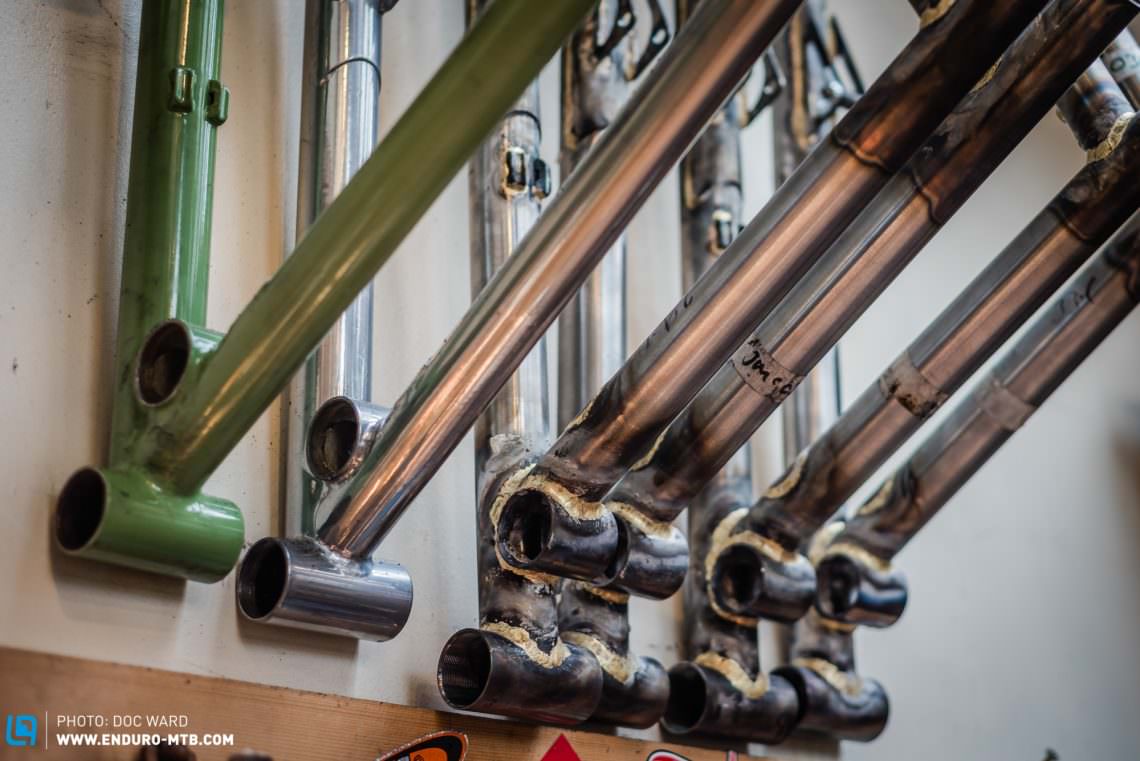
For years I rode an Orange Patriot, which I set up as a 63° head angle with a really low BB, even with a short 150 mm travel for such a slack bike it rode fantastically, as I had reduced the travel to get the BB down so it worked better.
Do you think the future is in custom geometry for more bike manufacturers, or is it just for the smaller more bespoke bike builders like yourself?
If the big companies are sticking with the carbon they can’t do custom geometry, as they have the tooling for their set sizes. To mass manufacture custom geometry is very complex, I don’t know that much about mass manufacture, but would suspect it would push the cost up too much. There’s obviously a gap in the market, as I’ve not only had these big tall people wanting custom geometry, there’s been a call for it from shorter riders too.
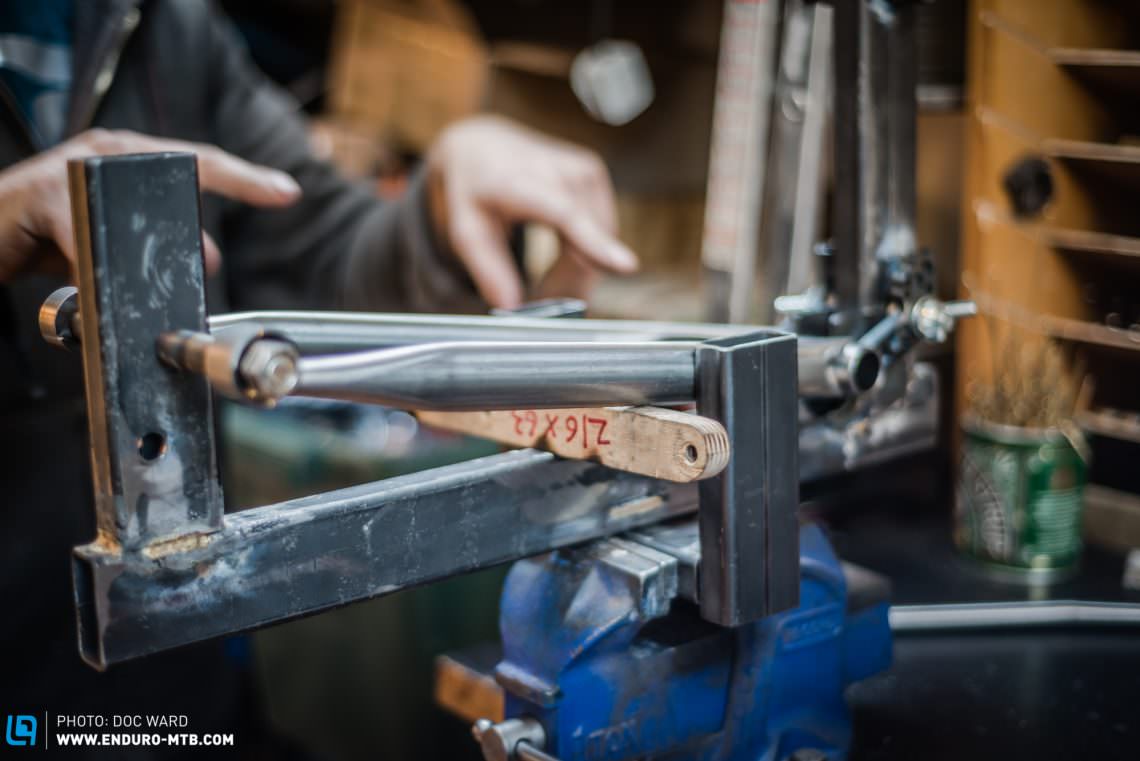
Have you ever had any thoughts about kid’s bikes?
Yes, I kind of think I might have a few spare swingarms knocking around, so I will be knocking something up for the future, maybe a 26″ wheeled frame, there’s no reason I can’t do it, the only issue is that it will cost the same as a full-sized bike.
People reading this may think “he works with steel, so maybe he has no experience with carbon fibre”. Have you had experience with carbon fibre in the past?
I’ve been an aerospace stress engineer pretty much from the start of my engineering career, I was working in new technology for Airbus, developing analysis methods. At the time I was chief technology person working on the latest carbon fibre. I spent most of my time seeing what carbon fibre could do. It’s a good material, I don’t have problems with it, but is it the right material to build bikes with; I don’t know!

What do you think about claims that certain top bike brands have hardly any “real” carbon fibre in their so-called carbon bikes?
In one of my jobs we spent a lot of time looking at the quality of manufacture, because the way it distorts really effects aircraft. So we were trying to get the lay-up as perfect as you can get it and the costs at Airbus for this are massive. So I’ve seen the best carbon fibre it is possible to do. I have seen a cut-through of a top-end expensive popular brand of carbon downhill bike and around the BB area, it was just horrendous, like they had just shoved the carbon fibre in there with the resin! There are different requirements for aerospace and bikes, that bike still worked, but the quality of bike carbon lay-up after work in the aerospace industry was appalling! It’s still fit for purpose and does its job, but you are not using it as well as you can. If you starting using carbon fibre like they do in aeroplanes it would cost huge amounts of money.
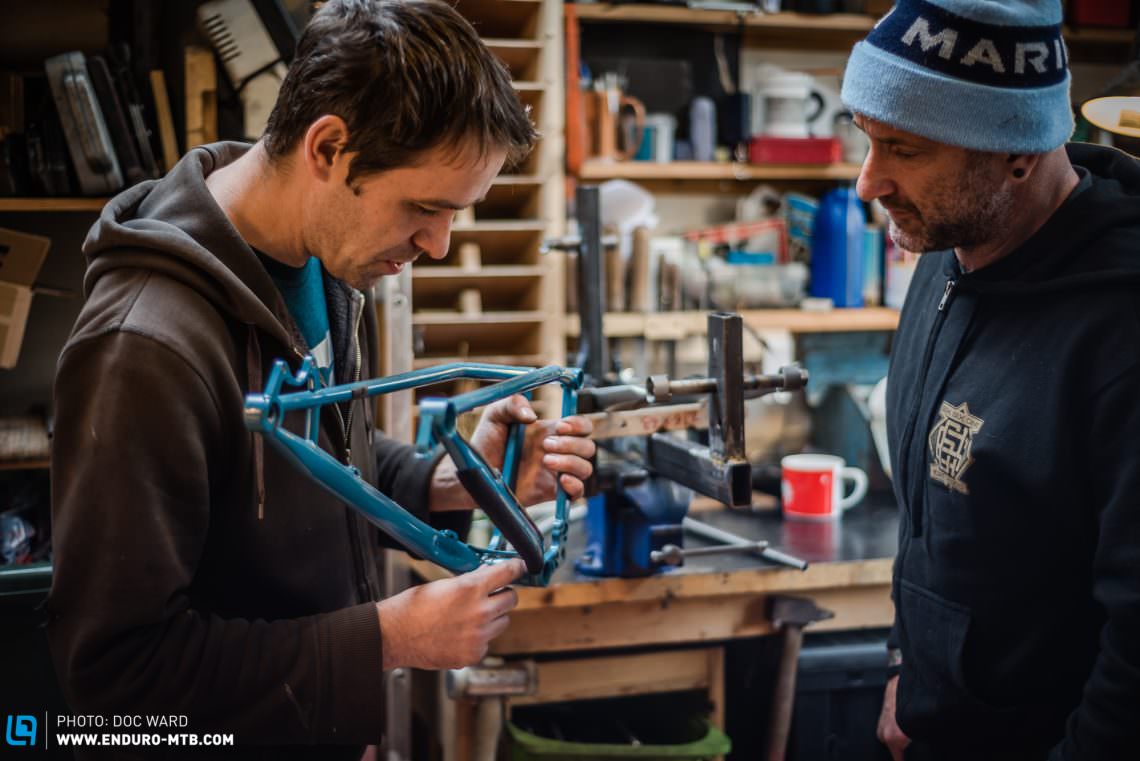
So, let’s say you made a mountain bike frame the same way you would have to for the aerospace industry with high-end lay-up, what would you think would be a realistic figure per frame when it comes to cost?
You wouldn’t get much change from € 50,000 really, it would be huge amounts of money!
What about the future for Starling Cycles then, where do you go from here?
I start full-time after Christmas, I have 35 orders awaiting now after the recent publicity, which is fantastic, so the current waiting list is July 2017, I think I may have just had two more orders just now as we’ve been chatting! Once all the running of the business has settled and is stable, then the idea would be to sub-contract the manufacture in the UK, which would allow me to focus on new designs, new engineering and to improve the designs we have. I’m even looking at some carbon technology and other stuff. I’d like to sit in my shed and be a happy mad professor!

So we’d like to give a big thanks and best of luck to Joe on his future ventures into the full-time world of bike manufacturing. We think he can do really well with these bikes, due to folk wanting to ride bikes with a difference. Watch this space for our very special build, as our next article will be on the performance of this highly tricked-out UK bike once it’s put together.
Website: www.starlingcycles.com
Did you enjoy this article? If so, we would be stoked if you decide to support us with a monthly contribution. By becoming a supporter of ENDURO, you will help secure a sustainable future for high-quality mountain bike journalism. Click here to learn more.
Words: Photos: Doc Ward








